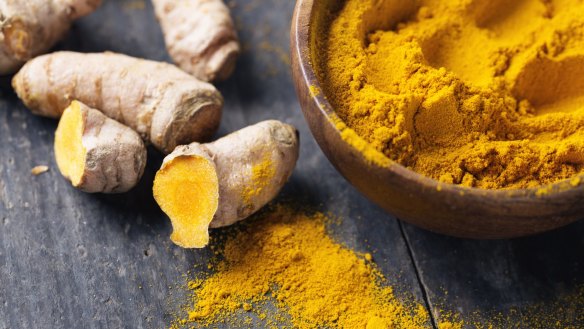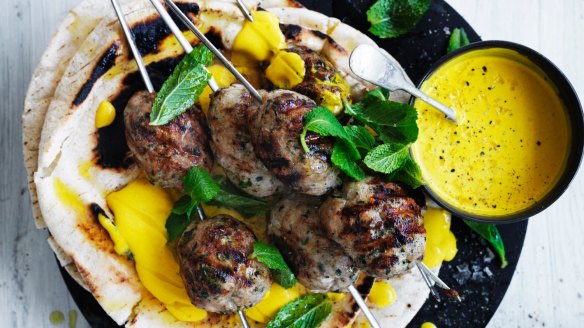Turmeric: Everything you need to know

Updated , first published

What is it?
This powerful little root is a cousin of ginger and was originally domesticated from a wild plant in India thousands of years ago. It has been used for centuries for its medicinal properties and to flavour and colour food, as well as a dye for fabric. It has long been used in English "curry" powders and is popular in health drinks. Small amounts of fresh turmeric are grown in Queensland. The harvest season begins as the plants die off for winter. The plump roots, or rhizomes, are lifted and cleaned and are then ready for storage or sale. Most of our dried, powdered turmeric comes from India where rhizomes are cleaned, sliced, dried, ground and packaged. Turmeric's botanic name is Curcuma longa. A compound called curcumin is extracted from the root and used as a natural food colouring called E100, which is used in everything from mustard to margarine. Turmeric is used extensively in traditional medicine across Asia. Research by Western scientists has shown curcumin is a powerful antioxidant in vitro, but is not readily absorbed by the body unless in the presence of other compounds such as piperine from black pepper. So enjoy those spice-filled turmeric-laden dishes – they could be doing you good.
Why do we love it?
Turmeric brings the most natural and brightest yellow colour to dishes. It also lays down an earthy, slightly bitter and peppery foundation flavour that other spices build on to make beautiful, complex dishes, especially those from the subcontinent. With its bright zing and rich colour, it brings a sense of health and happiness to recipes.

Who uses it?
Chef Peter Kuruvita remembers growing up in Sri Lanka where his grandmother had a small bottle under her bed containing oil of fenugreek leaves, lime and turmeric. "It was her first aid station," says the Noosa Beach House chef from his waterside restaurant. "As a little boy I would regularly have cuts and nicks over me from climbing in the fruit trees or other childhood activities that normally created small cuts and tears in my skin. Untreated in the tropical sun it would get infected very quickly." Kuruvita's grandmother was a vegan, but once a month she made egg curry from boiled eggs deep fried to form a tofu-like texture that absorbed the turmeric-rich kiri hodi. "This translates as 'milk curry' and is the foundation sauce of Sri Lankan cuisine," the chef says. Kiri hodi also uses coconut cream, dried fish flakes, chilli, onion, garlic and other spices.
How do you use it?
Start the day with a virtual trip to Bali with a bright, fresh and almost medicinal-tasting jamu juice, which is blended fresh turmeric, ginger, lemon and water, sweetened with a little honey. Make a hearty vegan chickpea and turmeric curry or minced chicken kofta skewers with turmeric tahini. Use Keen's curry powder to make curried egg sandwiches, the bright yellow colour coming from turmeric. Can't get to your favourite Vietnamese restaurant just now? Make your own banh xeo or crispy pancakes, which get their golden hue from a teaspoon of turmeric added to the batter made with egg, rice flour and coconut milk.
Make the most of winter cauliflower and make jars of mustard pickle, where the turmeric gives the veg a bright yellow colour. Remember the curcumin in turmeric is light sensitive, so store your pickles in a dark cupboard.
Where do you get it?
Most supermarkets stock dried turmeric and some larger stores will stock the fresh rhizomes. Look for city markets, health food stores and organic green grocers for fresh turmeric and head to Indian, Sri Lankan and Asian food stores for dried powdered turmeric.
After more than 10 years of answering readers' vexing culinary questions, Richard Cornish has turned his focus to ingredients. Suggest an ingredient via email to brainfood@richardcornish.com.au or tweet to @foodcornish.
Appears in these collections
More:
From our partners
Original URL: https://www.smh.com.au/goodfood/turmeric-everything-you-need-to-know-20210803-h1xmuh.html